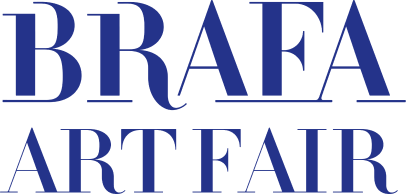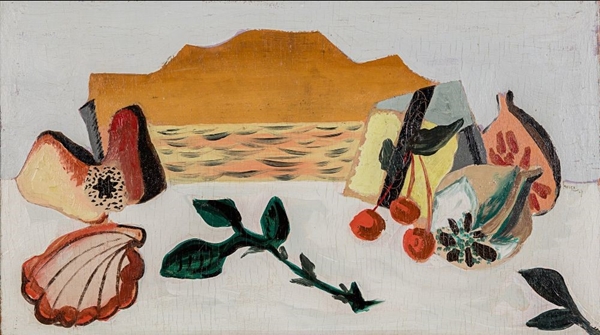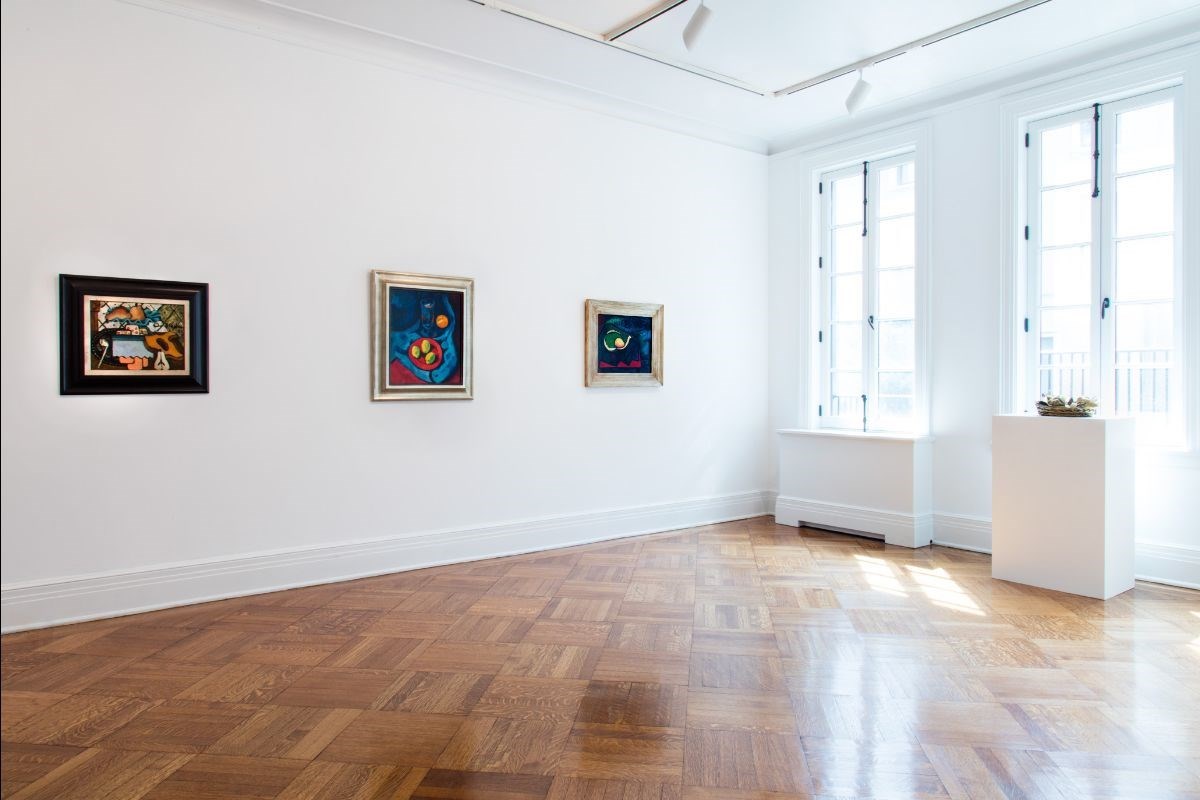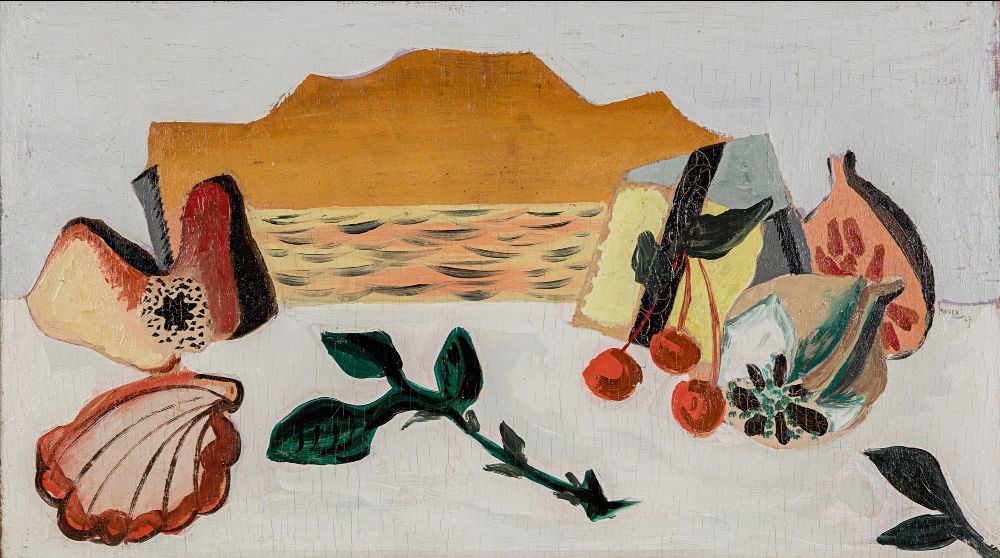

Rosenberg & Co - Interior Lives – 15.09 > 10.11.2021

09/09/2021
Interior Lives
September 15 – November 10, 2021
September 15 – November 10, 2021
“I have fallen in love with a painting … I have felt the energy and life of the painting’s will; I have been held there, instructed. And the overall effect, the result of looking and looking into its brimming surface as long as I could look, is love, by which I mean a sense of tenderness toward experience, of being held within an intimacy with the things of the world.” —Mark Doty, Still Life with Oysters and Lemon [1]

Left to right: Kenneth Stubbs, Marguerite Louppe, Sergio de Castro
Artists include: Nell Blaine, Serge Charchoune, Prunella Clough, Sergio de Castro, Edmund de Waal, Donald Hamilton Fraser, Serge Férat, John D. Graham, Juan Gris, Otto Gutfreund, Marsden Hartley, Henri Hayden, Auguste Herbin, Marguerite Louppe, Jean Lurçat, Giacomo Manzù, Louis Marcoussis, Alfred H. Mauer, Renate Paresce, Gino Severini, Kenneth Stubbs, Léopold Survage, Louis Valtat, and Susan Jane Walp.

Left to right: John D. Graham, Marsden Hartley, Alfred H. Maurer, Giacomo Manzù
The pandemic altered “our intimacy with the things of the world.” For many of these last months, most of us were at home, becoming newly intimate with our daily, small surroundings. As we shift into full re-openings and adjust to new waves, our heightened awareness of the ordinary objects of domestic life is fading. Our mental and emotional sightlines are readjusting to scenes beyond our homes, but their recent domiciliary focus provides an opportunity to consider the often-overlooked genre of still life.
The exhibition includes works by Jean Lurçat, Henri Hayden, Prunella Clough, Willem de Kooning, Marsden Hartley, Arshile Gorky, and Marguerite Louppe.

The pandemic altered “our intimacy with the things of the world.” These eighteen months have been simultaneously fearsome, tiring, and reflective: global tragedy compounded preexisting inequity; grief has been tempered with what Pamela M. Lee describes as “an atmosphere of collective depletion,” even as moments of collective expression—such as New Yorkers’ ritual evening applause during the shutdown—united neighbors in shared catharsis.[2] For many of these last months, most of us were at home, becoming newly intimate with our daily, small surroundings.
As we tentatively shift into full re-openings and adjust to new waves, our heightened awareness of the ordinary objects of domestic life is fading. Our mental and emotional sightlines are readjusting to scenes beyond our homes, but their recent domiciliary focus provides an opportunity to consider the often-overlooked genre of still life. In their static, unpeopled worlds, still lifes and domestic interiors present “the world minus its narratives or, better, the world minus its capacity for generating narrative interest.”[3] The still life deemphasizes narrative, and thereby the importance of human action. What remains is pure attention, buoyed by subjects made free by their very inanimacy.
The unmoving subjects of still life were the primary site of art history’s most dramatic rupture. Though historically occupying the lowest rung on the “hierarchy of genres,” still life provided both the subject and scene for the innovations of Modernism: from Paul Cézanne to the Nabis, and Cubism to Dada, the easily-identifiable objects of domestic necessity facilitated experiments in representation and the analysis of space. In his foundational text on still life, Norman Bryson wrote that “however vertiginous the painting’s ontology becomes, its play with the shifting modes of illusion is grounded in the familiar reality of tables, cups, and saucers. It is the security and dependability of that routine space which allows the metaphysical transformations to take off and soar.”[4] The familiarity of still life’s inanimate objects enables the artist to relinquish representation, as in Serge Charchoune’s pointillist abstractions from 1943, or Prunella Clough’s monochromatic planar deconstruction in Still Life with Mugs (1988). In this line of thinking, the “subject” of a still life is very much up for debate: the vision of the artist is foregrounded as the objects depicted become both defamiliarized and revived by their representation.
Defamiliarization offers the chance to look anew: still lifes and domestic scenes, absented of the human figure, are small forums on change, and the period of each work is made evident through style and the material subjects. “We are instructed by the objects that come to speak with us, those material presences,” the poet Mark Doty writes. “Why should we have been born known how to love the world? We require, again and again, these demonstrations.”[5]
[1] Mark Doty, Still Life with Oysters and Lemon (Boston: Beacon Press, 2001), 3–4.
[2] Pamela M. Lee, “Introduction: Aspiration Burnout,” October 176 (Spring 2021): 4.
[3] Norman Bryson, Looking at the Overlooked: Four Essays on Still Life Painting (London: Reaktion Books, 2018), 60.
[4] Bryson, 84.
[5] Doty, 10.
Hours: Monday – Saturday, 10am – 6pm
Contact:
Rosenberg & Co.
19 East 66th Street - New York, NY 10065
Phone +1/212 202 3270 - info@rosenbergco.com - www.rosenbergco.com